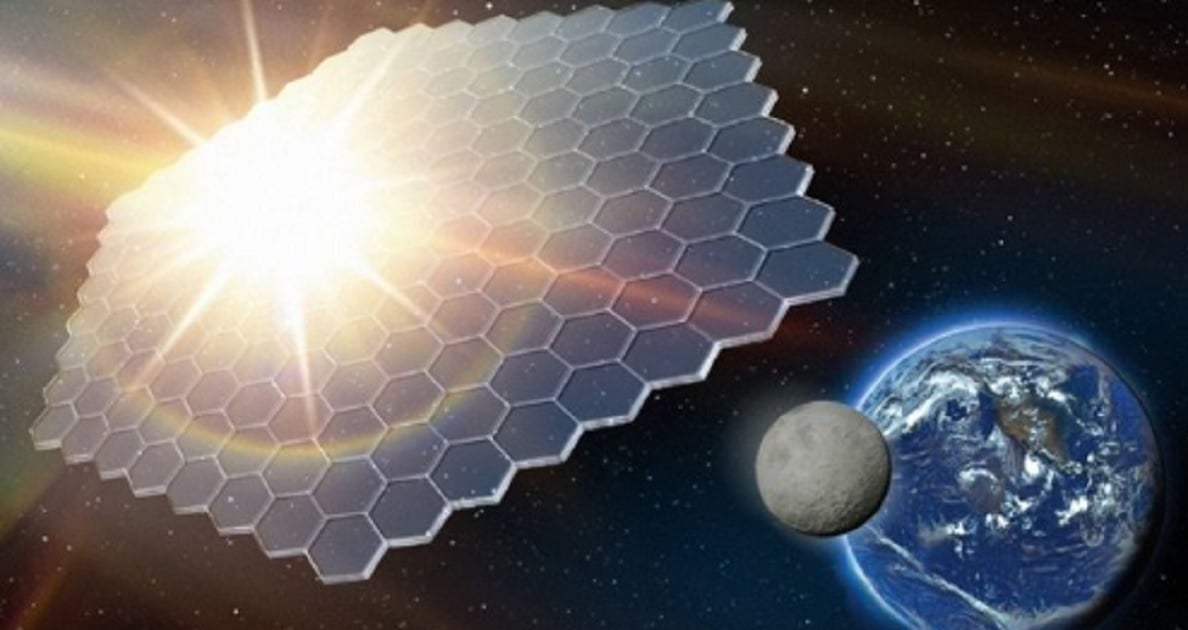Politics
Here We Go Again: Scientists Propose Radical ‘Sunshade’ Plan to Fight ‘Climate Change’

A group of scientists has proposed building a giant space curtain to reduce global warming and shield Earth from solar radiation.
Spanning as much as 4 million square kilometers, this megastructure aimed to fight “climate change” would be located about 1 million miles from Earth, in an area known as the Sun-Earth Lagrange-1 point, according to The Messenger, a news website launched in May.
The point marks the area between the sun and the Earth where the combined gravitational forces of the star and planet create equilibrium that allows a spacecraft to be “parked,” according to Space.com.
Upon installation, the structure could reduce the amount of heat from the Sun trapped on Earth due to greenhouse gases by deflecting sunlight toward outer space, Space.com reported.
That said, according to The Messenger, it is unclear how such a solar curtain would affect the light Earth receives from the Sun or whether the blocking of sunlight heading to Earth will bring forth unexpected consequences.
The idea is being proposed by scientists who are part of the Planetary Sunshade Foundation, a group whose website declares that “climate change is getting worse.”
Great write up from https://t.co/Hp4GIgXlYW. A sunshade *could* avoid the worst impacts of climate change. https://t.co/630ms4WVIC
— Planetary Sunshade Foundation (@SpaceSRM) December 21, 2023
The amount by which global temperatures would fall once the structure is in place is “variable depending on how long it takes to cease carbon emissions, how quickly carbon can be removed from the atmosphere, and whether society wishes to partially mitigate global warming or restore pre-industrial temperatures,” Planetary Sunshade Foundation research director Liz Scott noted in a 2022 report.
Pointing to solar sail technology — the use of reflective sails to propel a spacecraft through space using sunlight — the foundation believes that the “rapid” pace of technological development in space launch systems has reduced the cost of “sending materials and people into space dropping fast, changing the scope of what is possible,” The Messenger reported.
Planetary Sunshade Foundation argues there are two options for constructing the planetary sunshade, according to the group’s website.
During the primary phases, the project could be constructed using Earth-launched architecture, the group’s website stated.
Toward the final phases, construction could take place in space using resources also taken from space, including those from “the Moon or near-Earth asteroids,” according to the foundation’s website.
“A project this large influences the technology used to build it. We can start at the scale we’re able to, and learn how to build a sunshade as we go,” the foundation said.
The Planetary Sunshade Foundation’s proposed solar curtain is not the only project aimed at mitigating climate change by blocking out the sun.
Geoengineering — a similar project backed by tech billionaire Bill Gates — aims to block out portions of solar radiation headed for Earth by adding particles into the stratosphere, according to Forbes magazine.
The objective of spraying such particles into the atmosphere is to bring about a cooling effect on temperatures — an effect that happens to be the subject of the 2013 science-fiction movie “Snowpiercer,” currently streaming on Netflix.
In addition, according to a White House report published in July, the Biden administration is open to looking at the alteration of sunlight reaching Earth as a possible solution to lower global temperatures, Politico reported.
“A program of research into the scientific and societal implications of solar radiation modification (SRM) would enable better-informed decisions about the potential risks and benefits of SRM as a component of climate policy, alongside the foundational elements of greenhouse gas emissions mitigation and adaptation,” the White House report stated.
“SRM offers the possibility of cooling the planet significantly on a timescale of a few years.”
This article appeared originally on The Western Journal.
Read the full article here

-
Uncategorized5 days ago
The Surge of Crypto Slots: A New Period in Online Pc Gaming
-
Uncategorized5 days ago
Kəşf Etmək Binance Coin Kazino Saytları Dünyasını
-
Uncategorized5 days ago
The Increase of Dogecoin Casino Sites: An Extensive Introduction
-
Uncategorized5 days ago
High Roller Online Casinos: Inside the Globe of Elite Betting
-
Uncategorized15 hours ago
The Comprehensive Overview to Tutoring Networks







